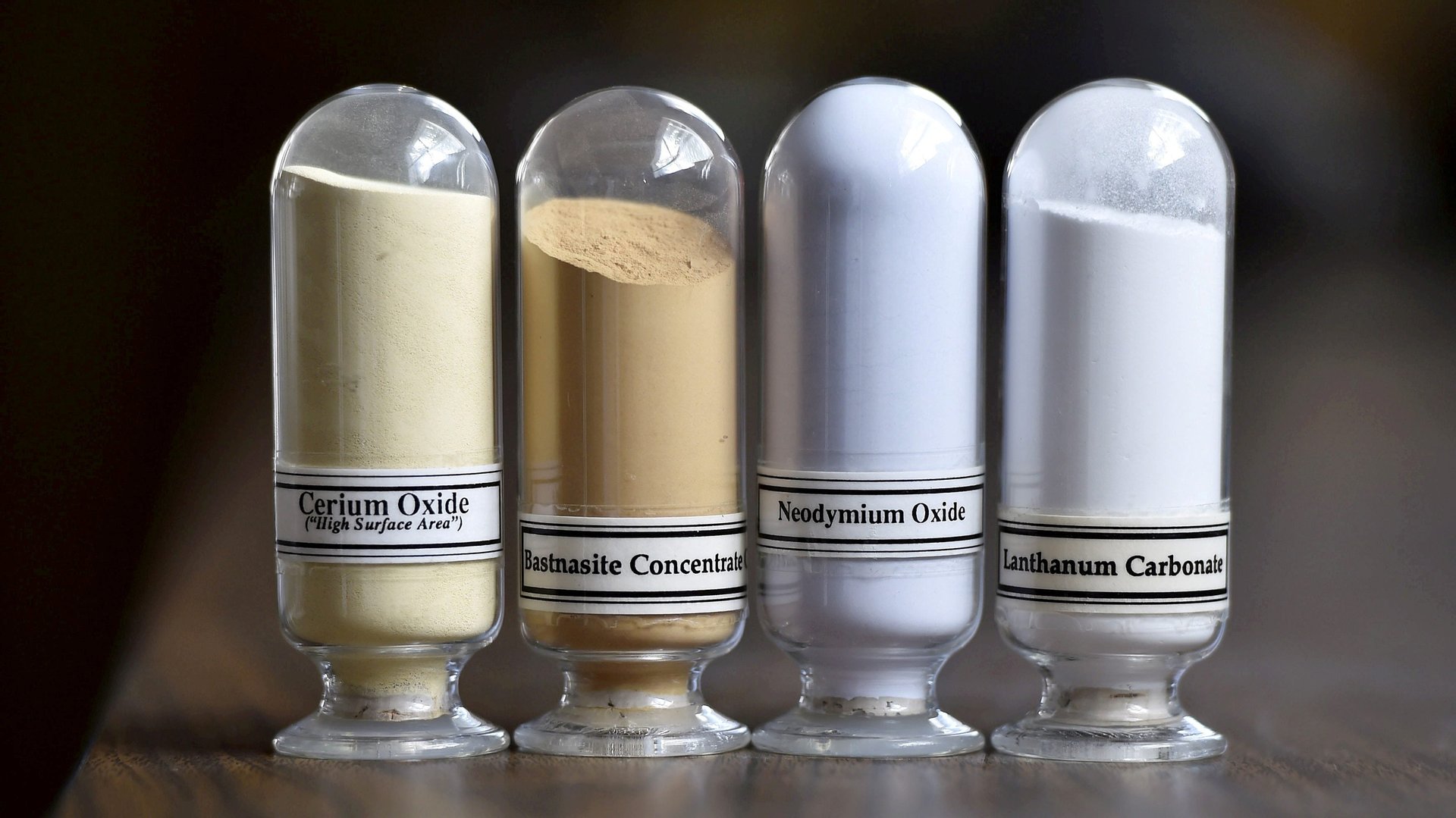The US is digging into its tax toolkit to rebuild its rare earth industry
To build a full rare earth supply chain, it’s sometimes not enough to just mine, extract, and process ores. Far away from project sites where heavy machinery dig deep into the earth, small tweaks to the tax code could align incentives and spur production to boost a domestic industry.


To build a full rare earth supply chain, it’s sometimes not enough to just mine, extract, and process ores. Far away from project sites where heavy machinery dig deep into the earth, small tweaks to the tax code could align incentives and spur production to boost a domestic industry.
That’s the thinking anyway behind a bipartisan bill introduced in the US Congress last week, which would provide tax credits for the domestic production of permanent rare earth magnets.
The “Rare Earth Magnet Manufacturing Production Tax Credit Act,” put forward by Democratic representative Eric Swalwell and his Republican colleague Guy Reschenthaler, would give a tax credit of $20 per kilogram of rare earth magnet produced domestically in the US. The tax credit increases to $30 per kilogram if all component rare earth material is produced or recycled in the US.
Rare earths are a group of 17 metals with unique physical and chemical properties, making them indispensable to many high-tech applications that power the global economy. Permanent rare earth magnets, which are powerful magnets enhanced with rare earths, are important components of products like wind turbines, electric vehicle motors, smartphones, and missile systems. A Toyota Prius, for example, contains about 55 pounds (24 kilos) of rare earths. China produces 87% of the world’s neodymium-iron-boron (NdFeB) permanent rare earth magnets, according to (pdf, link in Chinese) Chinese state-owned firm Guosen Securities.
How will tax credits help rare earth firms?
For USA Rare Earth, which owns and operates the Round Top rare earth mine in West Texas and is working to get its Colorado rare earth magnet plant up and running, the proposed tax credits represent a sizeable business incentive. Once fully operational, the company expects to produced at least 2,000 metric tons of rare earth magnets a year. Under the tax credit system, that would translate to between $40 million and $60 million in tax credits.
“All of this further underpins more stability for the US to have a domestic rare earth supply chain,” said USA Rare Earth CEO Pini Althaus. While he did not comment specifically on the financial impact of the tax credits, Althaus said that they serve as incentives to spur production while simultaneously improving investor confidence in the US rare earth sector. Since China could potentially further subsidize its own rare earth industry, thereby undercutting US prices, the tax credits provide “a cushion for US manufacturers,” said Althaus.
🎧 For more intel on the global supply chain, listen to the Quartz Obsession podcast episode on rare earths. Or subscribe via: Apple Podcasts | Spotify | Google | Stitcher.
And the rare earth magnet tax credits aren’t the only tax tool being considered by lawmakers. The bipartisan “Reclaiming American Rare Earths (RARE) Act,” introduced in April, would amend federal tax law and put in place permanent tax deductions for the domestic mining of critical minerals including rare earths. Taken together, both the tax deductions and production tax credits provide support for rare earth firms while ensuring “the market is still deciding what is being innovated and invested,” said USA Rare Earth advisory board member Dan McGroarty.
Leveling the playing field with China
China has long used a series of tax tools to support and shape its rare earth industry. In the 1980s, for example, it used export tax rebates to encourage producers to mine and export rare earths. When state planners wanted firms to focus more on processing rare earths, Beijing imposed export taxes on raw rare earth materials. Currently, China imposes a 13% value-added tax on rare earth products. Rare earth exports aren’t eligible for a VAT refund, but exports of rare earth magnets are, according to Ginger International Trade and Investment, a Singapore-based firm focused on rare earth supply chain management. That gives Chinese rare earth magnet makers a 13% raw material cost advantage over foreign manufacturers.
Asked how the proposed US tax credit system stack up against China’s VAT rebate, McGroarty said it would be difficult to do a direct comparison given the two country’s vastly different economic systems. “But it’s helpful that the new bill would put on the table an incentive that would…significantly level the playing field, if not perfectly level the playing field,” he said.